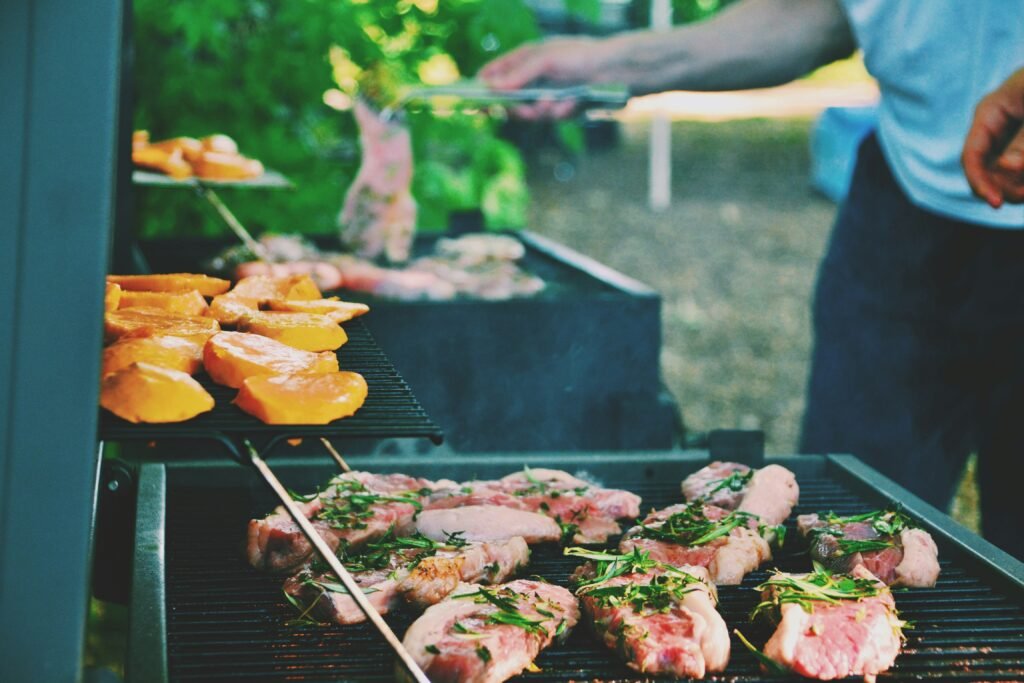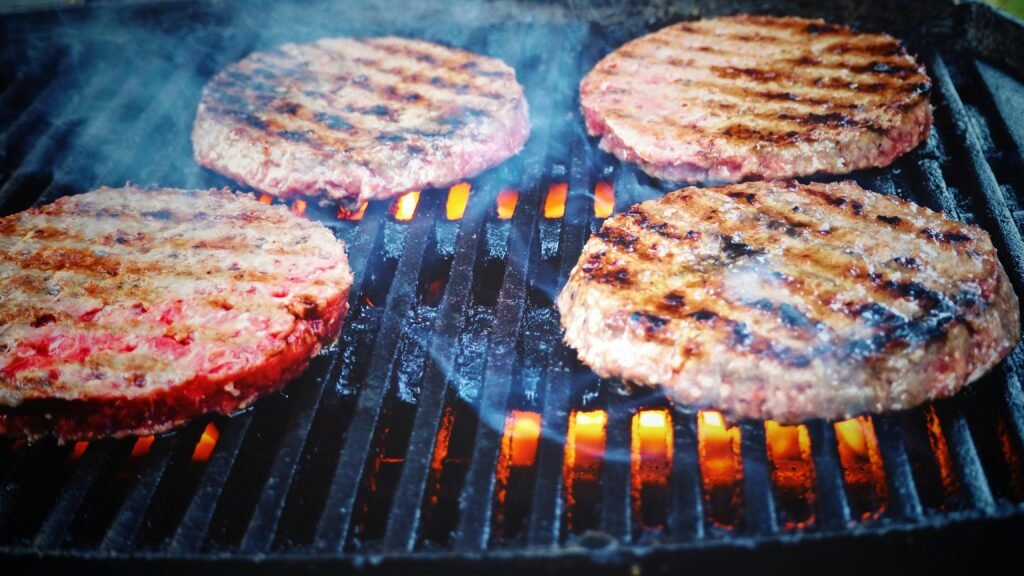Have you ever found yourself dreaming about the perfect smoked ribs, the kind that practically melt in your mouth and leave you licking your fingers in blissful contentment? If so, you’re definitely in good company. We, too, have experienced those cravings, and we’re excited to share all the smoky, flavorful secrets to creating smoked ribs that will have your taste buds singing.
Now, let’s get cozy and chat about all the delicious details that will take us from the land of daydreams to smoked rib reality. We know that mastering the art of smoked ribs can seem a bit intimidating at first, but once we’ve gone through the ins and outs together, you’ll see that it’s not only achievable but hugely satisfying.

This image is property of images.unsplash.com.
Understanding the Basics of Smoking Ribs
Grabbing our trusty smoker and turning pork ribs into a smoky masterpiece is akin to embarking on a culinary adventure. The journey begins with understanding why we smoke ribs and what each step entails.
Why Smoke Ribs?
We often wonder, why choose the smoking method out of all the cooking options available? Quite simply, it’s all about flavor. Smoking imparts a depth and complexity that can turn even the simplest rack of ribs into something extraordinary. The process enriches the meat with a smoky aroma and flavor, which is an experience in itself.
Types of Ribs We Can Smoke
There’s some debate about which type of ribs reign supreme in the BBQ world, but really, it all comes down to personal preference. Here are a couple of popular options:
-
Baby Back Ribs: These are relatively leaner, slightly curved, and come from the upper portion of the rib cage. They’re our go-to if we’re looking for something tender and quick to cook.
-
Spare Ribs: These come from the belly side of the rib cage, larger and meatier, though they take a bit longer to smoke. If we have a little extra patience, these are a delicious choice.
Understanding the rib type helps us plan our cooking time and set our expectations.
Getting Started: The Ingredients
Before we get our hands smoky, let’s gather all the ingredients we’ll need. Here’s a handy table to make sure we’ve got everything ready:
| Ingredient | Quantity |
|---|---|
| Pork ribs (Baby Back or Spare) | 2 racks |
| Yellow mustard | 2 tablespoons |
| Rib-rub dry seasoning | 1/2 cup |
| Apple juice or cider | 1/2 cup |
| Barbecue sauce (optional) | 1 cup |
Now that we’ve got our shopping list sorted out, let’s chat about why we’ve chosen each ingredient.
The Role of Each Ingredient
-
Pork Ribs: Obviously the star of the show, our choice of ribs can define the final taste and texture.
-
Yellow Mustard: It may seem unusual, but this acts as a binding agent for our rub, ensuring it clings beautifully to our ribs without leaving any mustard flavor.
-
Rib-rub Dry Seasoning: This is where we bring our creative flair, mixing various spices to tease out the best from our ribs. The right rub can transform meat, emphasizing flavors and creating a beautiful crust.
-
Apple Juice or Cider: This is our secret weapon for keeping the ribs moist. The sweet acidity also complements the flavors in our rub.
-
Barbecue Sauce: It’s optional, but if we’re fans of that sticky finish, this is our chance to brush it on at the end.
Preparing the Ribs: A Key to Flavor
Moving forward, we find the preparation phase to be just as crucial as the cooking itself. It’s all about setting the stage for the rib’s transformation.
Trimming and Prepping
Our first task is to rinse the ribs and pat them dry. This ensures that there isn’t any excessive moisture, which could prevent the rub from sticking. If the ribs have a thick membrane on the bone side, we want to carefully remove or score it to help with tenderness.
Applying the Binder and Rub
Once the ribs are ready, we lightly coat them with yellow mustard. This binder helps our rub adhere. Speaking of which, applying the rub should be an exercise in generosity—we really want to cover every nook and cranny. Remember, this is where a great deal of flavor is born.
When applying the rub, we like to think of ourselves as artists. We aim for an even layer, gently massaging the seasoning into the ribs so that every bite offers the same aromatic magic.
The Smoking Process: Low and Slow
It’s time to move on to the main event. Smoking ribs is all about patience and precision. The “low and slow” technique ensures we end up with tender, flavorful ribs.
Setting Up the Smoker
We begin by preheating our smoker to a steady 225°F (107°C). This temperature is crucial for allowing the ribs to cook slowly, rendering them tender and juicy. The choice of wood chips affects the final flavor, so here’s a quick rundown of some popular options:
| Wood Type | Flavor Profile |
|---|---|
| Hickory | Strong, bacon-like |
| Oak | Medium, versatile |
| Apple | Sweet, fruity |
| Cherry | Mild and fruity |
Each of these will impart a unique smoky flavor, so it’s all about what we’re in the mood for that day.
The Smoking Process
Once our smoker is ready and preheated, it’s time to place the ribs inside. We’ll want to keep them bone-side down, allowing the fat to render through the meat above. Our apple juice or cider will come in handy here—every hour or so, we spritz the ribs lightly to keep them moist and impart a little more flavor.
The beauty of this method is that it gives us time to relax, chat, and recount past smoke-infused memories, all while the magic unfolds inside the smoker.
Timing Our Smoke
For baby back ribs, we’re looking at about four to five hours of cooking time. Spare ribs take slightly longer, averaging about six to seven hours. Either way, we want to test for tenderness towards the end—we like to see the meat pulling back from the bones and feel them gently give under pressure.

This image is property of images.unsplash.com.
Finishing Touches: Glazing and Resting
As we approach the finish line, there are a few final steps.
Glazing for Perfection
If we’re using barbecue sauce, this is the moment to apply it. We generously brush the ribs during the last 30 minutes of cooking, enough time for the sauce to set up and get wonderfully sticky.
Resting the Ribs
Once they’re off the smoker, it’s tempting to dig right in, but giving the ribs a brief rest is essential. We let them sit for about 10-15 minutes—this little pause makes slicing easier and lets the flavors settle beautifully.
Savoring the Moment: Enjoying Our Smoked Ribs
With all our efforts culminating in this moment, it’s finally time to feast. There’s an unparalleled satisfaction in taking that first bite of ribs that we’ve smoked ourselves. There’s a sense of communal joy, sharing our triumphs and reliving how we got to this delicious point together.
Tips for the Best Results
- Keep an eye on temperature: Both meat and smoker temperatures should be checked periodically to ensure everything runs smoothly.
- Experiment a bit: Maybe we add some heat with some chili powder in the rub, or try a combination of different woods—it’s our canvas.
- Patience is Key: Rushing the process could result in tougher, less flavorful meat.
In conclusion, smoking ribs not only connects us to a rich tradition of barbecue but also allows for wonderful creativity and relaxation. As we share in this delicious endeavor, we find there’s just something wonderfully satisfying about gathering around a table with friends and family to enjoy the fruits of our labor. Let’s hold on to this blissful moment and savor every smoky, indulgent bite. Cheers to our smoky adventure!



